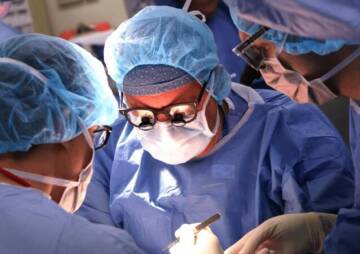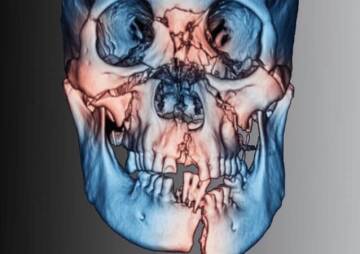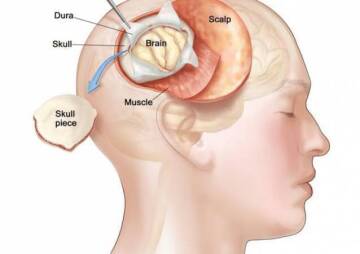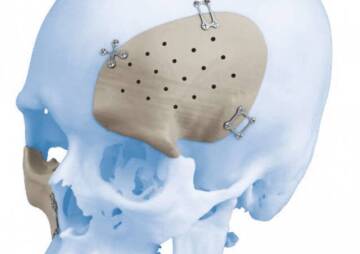-
Category
Craniomaxillofacial Surgery
Orthopedic Surgery
Spine Surgery
Orthopedic Implants
Hip Surgery
Knee Surgery
Pectus Excavatum
Bone Graft
Disinfectants
Healthcare
flat head plastic surgery
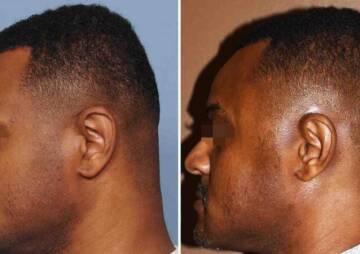
The problem of flat head deformity in childhood is easily treated. If left untreated, flat head plastic surgery is recommended by surgeons. In this article, the most important things you need to know about this anomaly are provided.
Plagiocephaly, or flat head syndrome, is a common skull anomaly. This disorder, which occurs in infants, is treated and the skull returns to its proper shape if it is diagnosed and used in a timely manner. But if the diagnosis and helmet treatment are not done in time; There is a disorder in the shape of the head that will require plastic surgery to treat.
Read more about flatfoot plastic surgery in this article.
What is plagiocephaly?
Plagiocephaly is a term that describes skull asymmetry. This problem occurs when the baby's skull is soft and the baby is constantly lying on one side. This position of the head causes a part of the skull to deform. However, some babies develop localized plagiocephaly in the uterus due to the position of their head in the mother's womb. Or it is seen in cases of multiple births.

Plagiocephaly is called anterior when it affects the forehead, and when it affects the back of the head, it is posterior, the most common form of flat head is a mild form on one side and behind the head.
How is flatulence treated?
In most cases, neonatal plagiocephaly can be treated with frequent head position changes. Skulls will get better shape as babies learn to sit and lie on their backs for less time.

Hat therapy
In cases where the plague is severe in the baby's head, it needs to be treated with a hat. These hats with a suitable shape give a normal shape to the soft head of the babies. But hat therapy should start before four to six months. If treatment is started within this time, the treatment period lasts approximately three months.
Starting helmet therapy after six months increases the length of the treatment period by one month. Whether or not the baby responds well after nine months is a bit of a question, but it is safe to say that the treatment period will be longer, about eight months. Starting treatment after one year will not have many positive results and is not highly recommended. As soon as the child reaches the age of two, the helmet therapy will no longer work and the shape of his head will remain the same for the rest of his life.

Is helmet therapy the best way to treat flatheads?
The benefits of using helmet therapy have not yet been scientifically proven, but it seems to help alleviate some of the problem if used at the right age and in the right way.
But keep in mind that these hats are expensive and should be worn 23 hours a day. In summer, when the weather is hot and they can cause itching, scaling and sweating. They may even aggravate skin problems or cause problematic skin blemishes. For this reason, they are prescribed only when necessary.

Plastic Surgery
If the time to fix the problem with the helmet has passed, the only way to treat the syndrome is plastic surgery bed head, which of course is not a method that is always recommended.
Surgery to repair injuries and defects in the skull is called cranioplasty. In this surgery, bone grafts from other parts of the body or artificial contours are used to correct the defect in the skull.


Artificial contours in the form of plates or mesh made of titanium, artificial bone in the form of liquid or solid biomaterials (prefabricated bone implants) correspond to the exact shape of the skull.
Although flat feet can be corrected using a variety of bone-strengthening techniques, the best way is to use artificial skull implants. Implants are custom artificial and are designed with the help of a computer in three dimensions for each person. They are then easily and with minimal damage to the scalp.
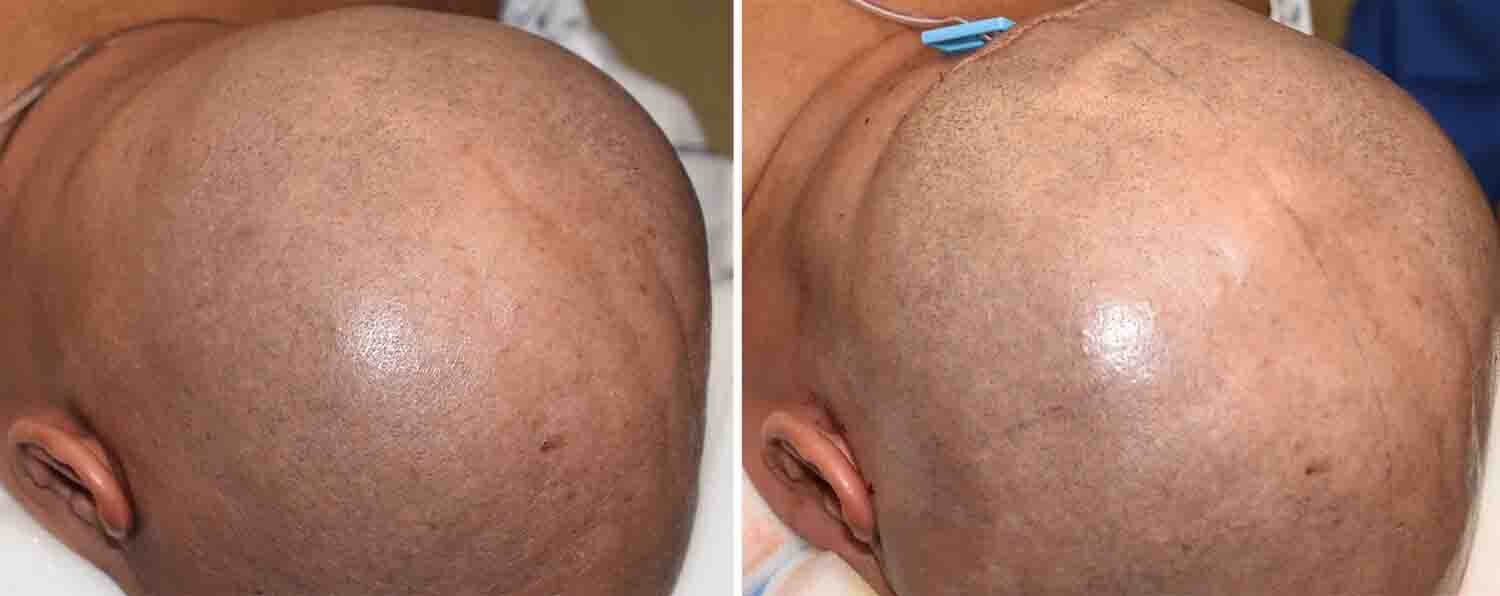
Who are the most applicants for flat head plastic surgery?
There is no specific evidence that plagiarism is gender-based, but men are generally more likely than women to correct the disorder. The reason is not the occurrence of more flat heads in men, but the more visible this problem in them. Because they usually have short and thin hair or even their hair has fallen out. For this reason, this anomaly is more common in them.
What are the reasons for the increasing demand for flat head plastic surgery?
If left untreated, bed rest syndrome can limit the number of activities a person can easily participate in. For example, these people do not have the ability to wear protective helmets for cycling, horseback riding, rock climbing, construction, the armed forces or emergency services because these helmets are made to fit normal-shaped heads.

Skull deformity can also affect a person's mental health. Most of these problems go back to childhood. Although these people are smarter and more attractive in many ways than ordinary people, they may not be treated well by their peers or people in the community because of the shape of their heads.
Many of them experience social frustration. They feel alienated from other people in society. Because, for example, they can not have every hairstyle they like. This will cause them to lack self-confidence.
On the other hand, some studies show an association between flat head syndrome and some growth and physical health problems. Of course, research in this area is ongoing and this issue has not been confirmed yet.

Is Plastic Surgery Necessary to Treat Flat Head Syndrome?
The problem of cranial deformity in childhood is easily treated. In many cases, the problem is mild and improves with special care when the baby sleeps and uses medical pillows. In cases where the problem is moderate to severe, wearing a helmet is one of the most effective treatments, but this process takes some time. If not done in time, the skull malformation will remain.
Due to the problems caused by bed syndrome, such as limited participation in certain activities, social frustration, loss of self-confidence in patients and the possibility of growth problems, bed plastic surgery is recommended by doctors at the request of the person.
